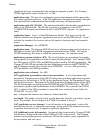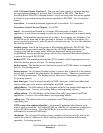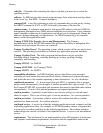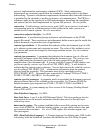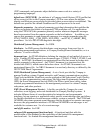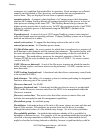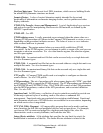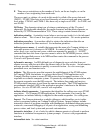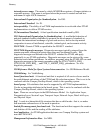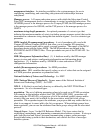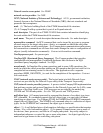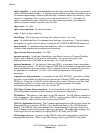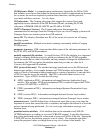Glossary
OSI/FTAM Responder Manual—425199-001
Glossary-10
first-level data types. The lowest-level DDL structures, which serve as building blocks
on which DDL parameter structures are based.
format effectors. A class of control characters mainly intended for layout and
positioning of information on character-imaging devices, such as printers and video
display terminals.
FTAM (File Transfer, Access and Management). A set of Application Layer services
and protocols used for manipulating files across an OSI network, as defined by the
ISO-8571 specification.
FTAM API. See API.
FTAM initiator errors. Locally generated errors returned when the return value on a
Compaq FTAM procedure call (shown in the Compaq FTAM manuals as status or error,
depending on the procedure) indicates an error. The value of status or error indicates
what occurred and how to proceed.
FTAM regime. The regime entered when you successfully establish an FTAM
association. In the FTAM regime, you can attempt to select or create a file, and you can
terminate or abort an association. See also data-transfer regime, file-selection regime,
and file-open regime.
FTAM-1 file. An unstructured text file that can be accessed only as a single data unit.
See also document types.
FTAM-2 file. A sequential text file that can be accessed either as a single data unit or as
multiple data units. See also document types.
FTAM-3 file. An unstructured binary file that can be accessed only as a single data unit.
See also document types.
FTC profile. A Compaq FTAM profile used as a template to configure an alternate
event collector. See also VFS profile.
FTM procedures. The set of procedure calls whose names begin with “FTM”, provided
with Compaq FTAM to support the FTAM protocol. The FTM procedures are defined in
the EXTDECS0 and CEXTDECS files. The FTAM API consists of the FTM procedures
plus the MFM procedures, a subset of the APS procedures, and associated definition
files. See also API.
functional unit. In OSI terms, a collection of service primitives needed to provide one
of the major optional styles of working, such as file access or enhanced file
management. Functional units are negotiated at association establishment. Functional
units determine which sets of FTAM services are available for an association, depending
on which service class is negotiated.
FUP (File Utility Program). A Compaq utility program that can be used to perform
many functions on disk files and peripheral devices such as tape drives. For example,
you can use FUP to create and purge files, duplicate and display files, alter file
characteristics such as security attributes, and load data into files.
future-filesize attribute. A file attribute that specifies the size limit (in octets) for
modification or extension of the file. The future-filesize attribute is related to the



